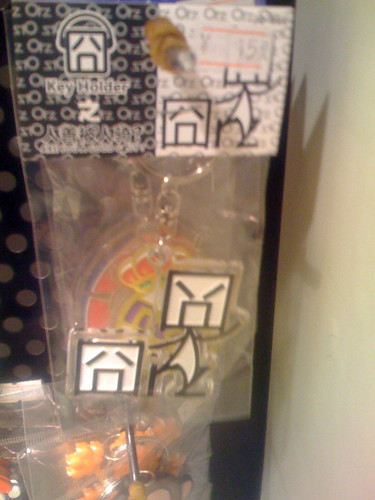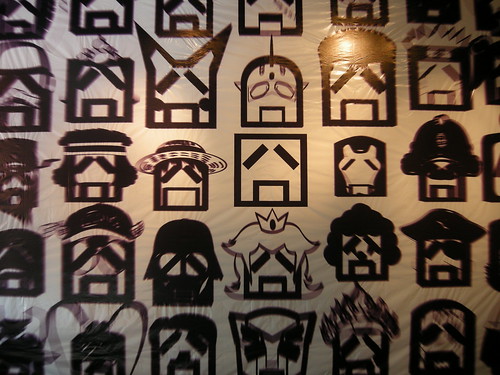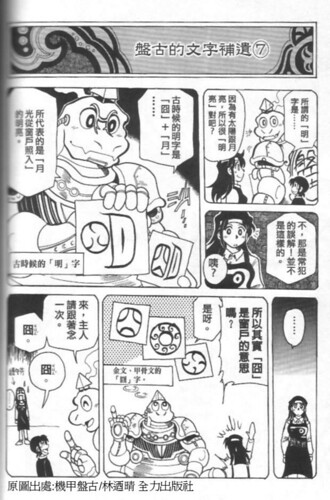Jiong Permutations
The 囧 (jiǒng) phenomenon has been around for a while now, and I’m starting to see more and more permutations of it. Here are a few examples.
From an online Chinese ad:
From TofuBrain‘s Flickr page:
From a local shop:
What have you seen?
Flickr updates:
This photo by 强悍的兔子.Rabbit has many permutations:
Also, these two examples of 囧 showing up in the character 明…
…are explained by this comic [large size]:
The comic says that the character 明 actually derives, not from 日 and 月 as is commonly taught, but from 囧 and 月. This etymology seems to confirm it. So one of the earliest character etymologies we learn (sun + moon = bright) is either a lie, or actually just a bit more ambiguous than we were led to believe? Interesting!








Reference
http://yoyu.blogbus.com/logs/20699451.html
But it’s interesting there’s key ring
kastner,
Thanks for the link!
You also made me realize I used 冏 when I meant to use 囧. Oops. Fixed!
I think if you look at the earliest characters, the oracle script ones, that the majority show the character for sun next to moon, although it’s true that a couple of them seem to have jiong. Certainly in the Naxi Dongba script the character is composed of sun + moon.
As the character is deemed to be a ‘pictograph’, and the earliest oracle forms of 囧 have it as a round character (archaeologists haven’t discovered evidence for round windows that early) there is some dispute as to whether its original meaning was ‘window’; some suggest it originally meant ‘bright’ or ‘sun’. So we’re back to 日.
yeah, i noticed that too and thought you did it intentionally.
Here’s another pic
http://lh6.ggpht.com/victorhsieh/R0hb-QGcPWI/AAAAAAAACsg/lxZakWWHqpU/s400/%E5%9B%A7.jpg
actually you can find some on google image
Here are some ‘jiong panda’ animated gifs. Much as I find animated gifs annoying, I thought some of these were clever.
http://www.haowanqq.com/html/332245455.htm
Duncan,
Interesting theory, bringing in the round window. I don’t think you can rely on it too much, though, because there’s always an element of stylization with characters, whether it’s rounding in some scripts or squaring in others.
Yeah, 日 and 月 are “pictographs” (象形字), and I it seems 囧 is too, but that makes 明 an “ideogrammic compound” (会意字). That’s not really terribly important, except that 会意字 are typically introduced as combinations of pictographic (象形) or ideographic (指事) characters (still perfectly consistent), and 明 tends to be one of the favorite examples of the type. When it’s given as an example, however, it’s always 日 and 月 given as the pictographic components, never 囧 and 月, even though, as you can see in the two pictures in the post, there are still cases of the 明 for with 囧 in it popping up.
I don’t care enough to research this, but I’m guessing that in the remote past, two versions of 明 coexisted (they both make sense), and they eventually merged into one, either through natural evolution, or through ancient character reform.
But yeah, I suppose this is a detail that the first year student of Chinese doesn’t really need to know. 🙂
kastner,
Heh, no, that was carelessness. I wish I had more time to spend on blog posts, but as it is I have very little.
Nice link! 🙂
sushan,
Cute! Thanks for the link.
I like it. 😛
You may already know about this children’s book, but it’s in the spirit of associating pictures with non-pictographic characters.